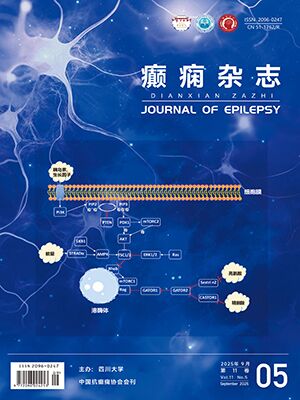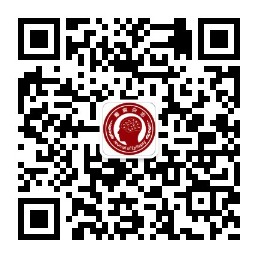| 1. |
Gouveia FV, Warsi NM, Suresh H, et al. Neurostimulation treatments for epilepsy: deep brain stimulation, responsive neurostimulation and vagus nerve stimulation. Neurotherapeutics, 2024, 21(3): e00308.
|
| 2. |
Thurman DJ, Begley CE, Carpio A, et al. The primary prevention of epilepsy: a report of the Prevention Task Force of the International League Against Epilepsy. Epilepsia, 2018, 59(5): 905-914.
|
| 3. |
?scher W, Potschka H, Sisodiya SM, et al. Drug resistance in epilepsy: Clinical impact, potential mechanisms, and new innovative treatment options. Pharmacol Rev, 2020, 72: 606-638.
|
| 4. |
Chang LWX. Progress in epidemiological investigation of epilepsy in china. Int J Neurol Neurosurg, 2012, 39: 161-164.
|
| 5. |
Nawani H, Smith ML, Wheeler AL, et al. Functional connectivity associated with health-related quality of life in children with focal epilepsy. AJNR Am J Neuroradiol, 2019, 40(7): 1213-1220.
|
| 6. |
Ferro MA. Risk factors for health-related quality of life in children with epilepsy: a meta-analysis. Epilepsia, 2014, 55(11): 1722-1731.
|
| 7. |
Choi HY, Kim SE, Lee HW, et al. Social behavioral problems and the health-related quality of life in children and adolescents with epilepsy. Psychiatry Investig, 2016, 13(5): 488-495.
|
| 8. |
Liu X, Han Q. Risk factors on health-related quality of life in children with epilepsy. Clin Pediatr (Phila), 2015, 54(14): 1334-1338.
|
| 9. |
馬梅, 惠沼沼, 張月, 等. 癲癇患兒主要照護者負擔與社會支持的相關性研究. 解放軍護理雜志, 2018, 35(2): 25-29.
|
| 10. |
劉玉明. 癲癇患兒父母照顧負擔、社會支持和生活質量的相關性研究. 湖南: 湖南師范大學, 2020, 碩士學位論文.
|
| 11. |
Reilly C, Agnew R, Neville BGR. Depression and anxiety in childhood epilepsy: a review. Seizure, 2011, 20(8): 589-597.
|
| 12. |
梁錦平. 國際抗癲癇聯盟2017年版癲癇分類特點及其解讀. 中國實用兒科雜志, 2020, 35(1): 47-54.
|
| 13. |
倪平, 陳京立, 劉娜. 護理研究中量性研究的樣本量估. 中華護理雜志, 2010, 45(4): 378-380.
|
| 14. |
Varni JW, Seid M, Knight TS, et al. The PedsQLTM4. 0 generic core scales: Sensitivity, responsiveness, and impact on clinical decision-making. Journal of Behavioral Medicine, 2002, 25: 175-193.
|
| 15. |
盧奕云, 田琪, 郝元濤, 等. 兒童生存質量測定量表PedsQI4. 0中文版的信度和效度分析. 中山大學學報(醫學科學版), 2008, 29(3): 328-331.
|
| 16. |
胡韜. 少年兒童領悟社會支持量表的編制. 貴州師范學院學報, 2010, 26(3): 71-75.
|
| 17. |
劉硯燕. 患者報告結局測量信息系統: 兒童報告版和父母報告版癌癥相關簡表的測量學研究. 上海: 第二軍醫大學, 2016, 碩士學位論文.
|
| 18. |
劉雙喜, 郝衛成. 癲癇患兒生活質量調查及影響因素分. 山西職工醫學院學報, 2017, 27(5): 23-25.
|
| 19. |
朱培培, 卓文燕, 陳玲. 癲癇患者焦慮抑郁、社會支持狀況與主觀幸福感的相關性. 中國神經精神疾病雜志, 2014, 40(9): 527-531.
|
| 20. |
Sabaz M, Lawson JA, Cairns DR, et al. Validation of the quality of life in childhood epilepsy questionnaire in American epilepsy patients. Epilepsy Behav, 2003, 4: 680-689.
|
| 21. |
Adewuya AO. Parental Psychopathology and self-rated quality of life in adolescents with epilepsy in Nigeria. Dev Med Child Neurol, 2006, 48: 600-603.
|
| 22. |
Pastor PN, Reuben CA, Kobau R, et al. Functional difficulties and school limitations of children with epilepsy: findings from the 2009-2010 national survey of children with special health care needs. Disabil Health J, 2015, 8(2): 231-239.
|
| 23. |
韓麗麗. 小學中高年級非獨生子女主觀生活質量與心理健康的關系. 天津: 天津師范大學, 2020, 碩士學位論文.
|
| 24. |
Plevin D, Smith N. Assessment and management of depression and anxiety in children and adolescents with epilepsy. Behav Neurol, 2019, 20: 2571368.
|




